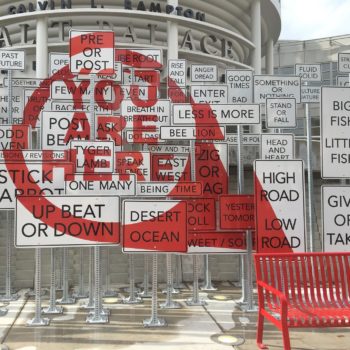Why Location Is the Next CRM
by on 25th Oct 2017 in News

With geolocation data being a part of everything we do these days, advertising or otherwise, why shouldn’t this data be layered into existing consumer profiles? Writing exclusively for ExchangeWire, Thomas Walle (pictured below), CEO and co-founder, Unacast, explains why location is an important piece of an effective marketing strategy and an ideal way to learn more about, predict future behaviours of, and build a relationship with, your ideal consumer.
Right now, every retailer worth their salt is collecting as much information as they can on their customers, whether it’s their online shopping habits or a log of every customer-employee interaction. People increasingly are coming to expect an experience that’s tailored to their preferences and previous behaviours. Location is just another, although critical, piece of that puzzle, and one that will help businesses better understand the customers they are trying to reach.
Businesses are already used to collecting a litany of data points about each of their consumers; so it shouldn’t be too much of a stretch for them to start gathering information about their consumers’ locations to add onto existing consumer profiles. In fact, location will be one of the most important pieces of information on a customer that a brand can have, as it informs the content of advertising as well as the method itself.
Location is important because it provides context. If all the information you have to go on is what a person has previously bought online, the only thing you really know is that that person has bought certain things in the past. You might be able to spot some patterns, such as the fact that the person buys cases of La Croix on a weekly basis, but even that tells you very little about what motivates someone to do something. Continuing with that train of thought, if you’re able to layer location or proximity data on top of an existing consumer profile and send an ad for La Croix over to them the next time they’re close to a grocery store, you suddenly have a much better chance of converting that person.
It is an oft-cited statistic that 80% of data has a geospatial element to it. What this means is that it needs to be seen in context, corresponding not only to individuals, but also to location. There are currently some services that allow firms to layer data on top of maps, making it easier to visualize CRM data for geotargeting and other location-based insights. This would make it easier for customer service reps, for example, to direct customers to the nearest stores or enter in a change of address.
The goal with CRM and, increasingly, location, is to go beyond, in real time, and instead try to predict people’s future behaviours. If you know that a person is more likely to respond to an ad that they receive while shopping in a grocery store than if they were to receive the same one at work, you could use that information to tailor promotions to that individual, and increase the chances of success.

Thomas Walle, CEO & co-founder, Unacast
Furthermore, the profusion of products and services related to location data has made it easier than ever for any company, no matter how big or small, to begin incorporating location services into its CRM profiles or advertising methods. Snapchat’s geofilters are one such example: for a small fee, anyone can advertise their company within a small geographic area, and keep track of those who use the filter.
Using a customer’s location information allows advertisers and brands to be proactive about reaching them, instead of relying on a catalogue of past interactions that have been entirely on the customer’s own terms. No matter how much time we spend online, the majority is spent out and about in the real world. That means that brands will be able to reach customers more effectively by cutting through all of the noise online, and reach people on the streets.
However, brands should keep in mind that, while location is important, it’s still only one part of an effective marketing strategy. You might be able to find someone’s position down to a tenth of a degree; but if your creative fails, or your ad is too generic, it will fall flat all the same.
At this point, it should be apparent that knowing the general patterns of someone’s behaviour is an immensely valuable resource that any brand would do well to measure. Just as CRM completely transformed the relationship between customer and business, location has the power to redefine and refine that relationship once again. It makes sense that any company that wishes to know more about its customers would naturally want to find out what that customer gets up to in the real world, and figure out how to use that information to their advantage.








Follow ExchangeWire